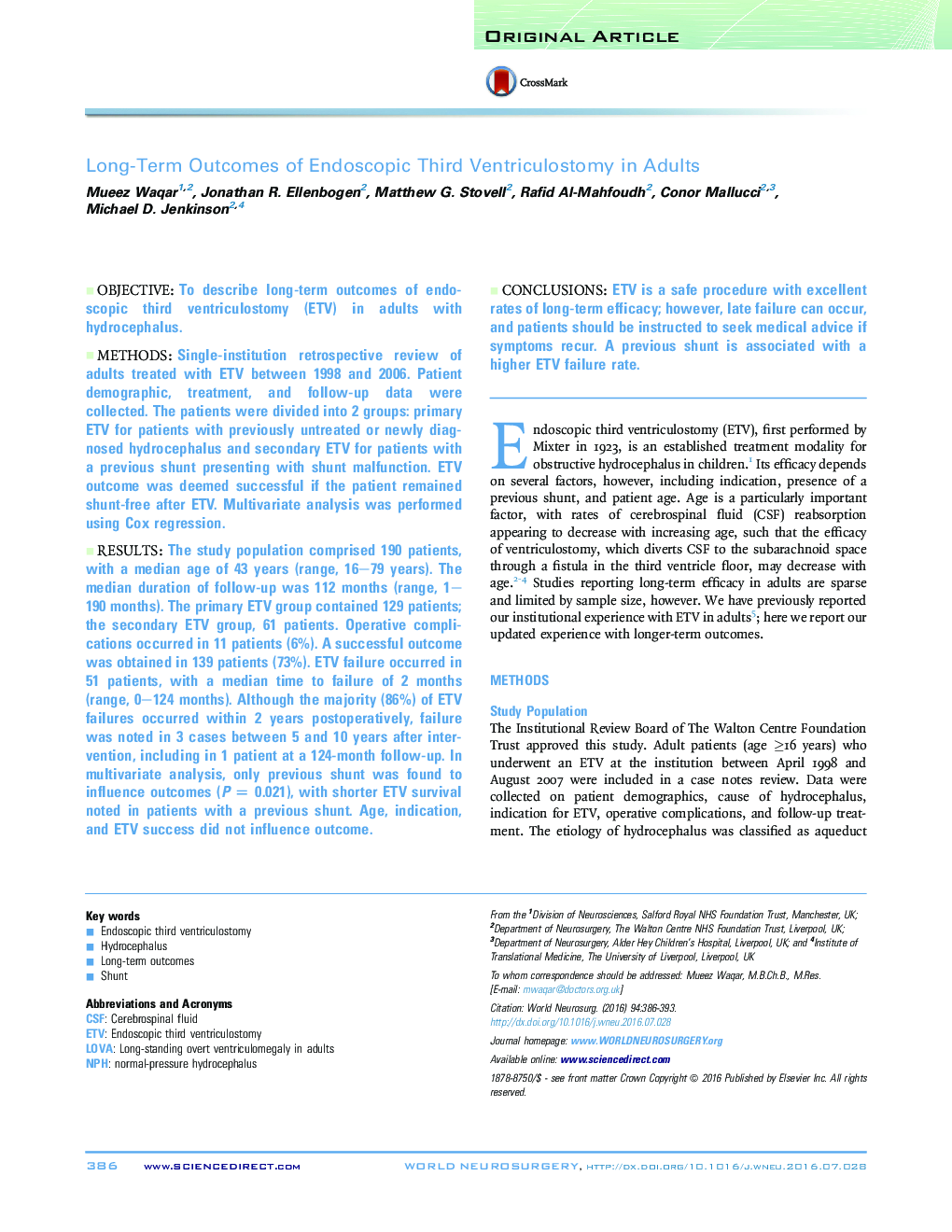| کد مقاله | کد نشریه | سال انتشار | مقاله انگلیسی | نسخه تمام متن |
|---|---|---|---|---|
| 3094624 | 1581461 | 2016 | 8 صفحه PDF | دانلود رایگان |
ObjectiveTo describe long-term outcomes of endoscopic third ventriculostomy (ETV) in adults with hydrocephalus.MethodsSingle-institution retrospective review of adults treated with ETV between 1998 and 2006. Patient demographic, treatment, and follow-up data were collected. The patients were divided into 2 groups: primary ETV for patients with previously untreated or newly diagnosed hydrocephalus and secondary ETV for patients with a previous shunt presenting with shunt malfunction. ETV outcome was deemed successful if the patient remained shunt-free after ETV. Multivariate analysis was performed using Cox regression.ResultsThe study population comprised 190 patients, with a median age of 43 years (range, 16–79 years). The median duration of follow-up was 112 months (range, 1–190 months). The primary ETV group contained 129 patients; the secondary ETV group, 61 patients. Operative complications occurred in 11 patients (6%). A successful outcome was obtained in 139 patients (73%). ETV failure occurred in 51 patients, with a median time to failure of 2 months (range, 0–124 months). Although the majority (86%) of ETV failures occurred within 2 years postoperatively, failure was noted in 3 cases between 5 and 10 years after intervention, including in 1 patient at a 124-month follow-up. In multivariate analysis, only previous shunt was found to influence outcomes (P = 0.021), with shorter ETV survival noted in patients with a previous shunt. Age, indication, and ETV success did not influence outcome.ConclusionsETV is a safe procedure with excellent rates of long-term efficacy; however, late failure can occur, and patients should be instructed to seek medical advice if symptoms recur. A previous shunt is associated with a higher ETV failure rate.
Journal: World Neurosurgery - Volume 94, October 2016, Pages 386–393
